The Tomato Frog, scientifically known as Dyscophus antongilii, is a fascinating amphibian endemic to Madagascar. Renowned for its vibrant coloration and unique behaviors, understanding the Tomato Frog’s habits and ecology is essential for conservation efforts and for those interested in herpetology. This article delves into the various aspects of the Tomato Frog’s behavior, habitat, and the challenges it faces in the wild.
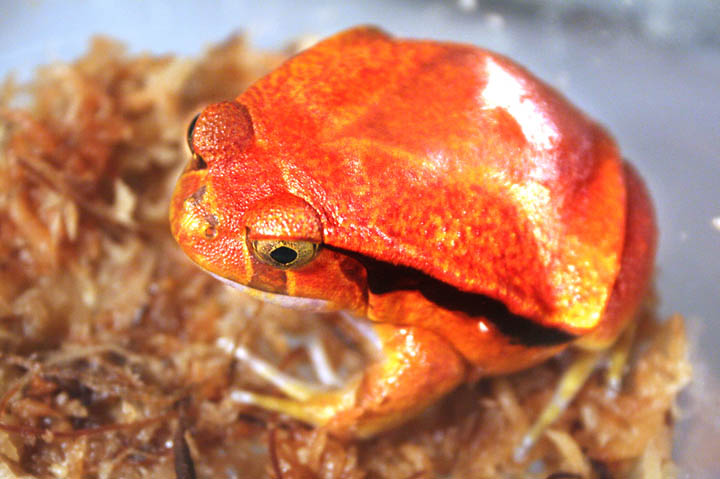
The Tomato Frog: An Overview
Tomato Frogs are easily identifiable by their striking colors, with females exhibiting a bright red-orange hue, while males display a more subdued yellow-orange. Adult Tomato Frogs typically measure between 2.5 to 4 inches (6.5 to 10 cm) in length, with females generally larger than males. They inhabit the eastern rainforest belt of Madagascar, primarily in moist lowland forests, swamps, and stagnant water bodies. Their diet consists mainly of insects and invertebrates, and they can live for approximately 6 to 8 years in the wild.
Social Behavior of Tomato Frogs
Tomato Frogs exhibit both solitary and social behaviors. While they are primarily nocturnal and tend to be solitary, they engage in social interactions during the breeding season. Males establish territories and attract females through vocalizations and courtship displays. During mating rituals, males call from shallow water, and females can lay up to 1,500 eggs at a time, primarily during the rainy season.
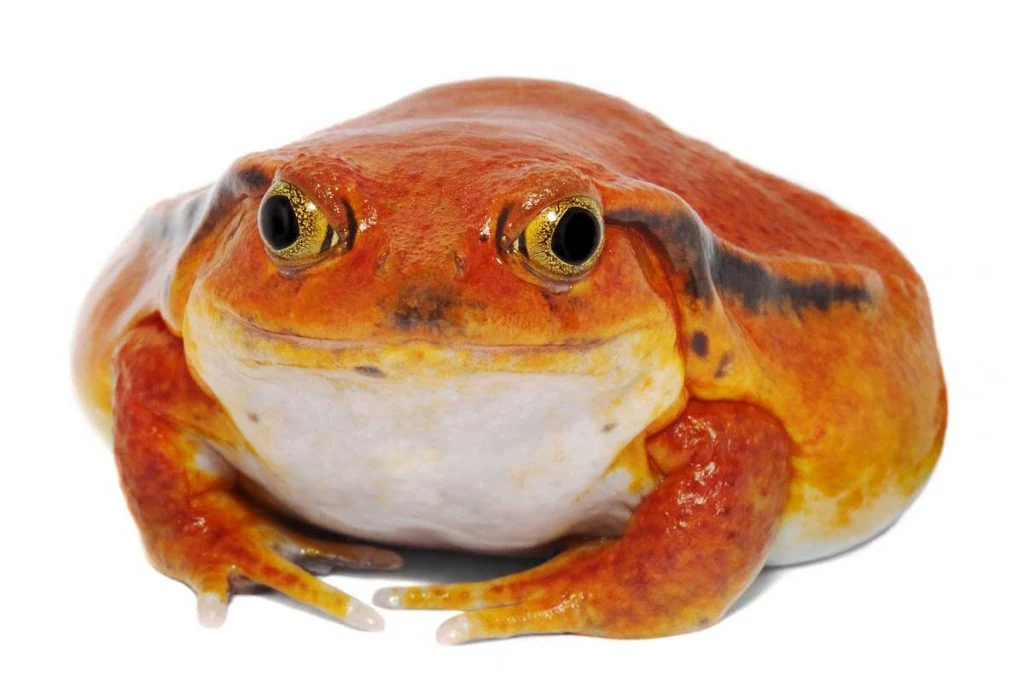
Communication Methods
Communication among Tomato Frogs occurs through various methods. Males produce distinctive vocalizations, particularly during the breeding season, to attract females. These calls serve multiple purposes, including signaling territory and attracting mates. Additionally, Tomato Frogs utilize visual cues, such as body language and coloration, as well as chemical signals through skin secretions to communicate with one another.
Feeding and Foraging Habits
The typical diet of Tomato Frogs includes insects, insect larvae, and worms. They exhibit specific feeding patterns, often foraging at night when they emerge from their burrows. Their hunting technique involves ambushing prey, using rapid tongue projection to capture insects. Adaptations such as their short, stocky bodies and strong jaws enhance their foraging success.
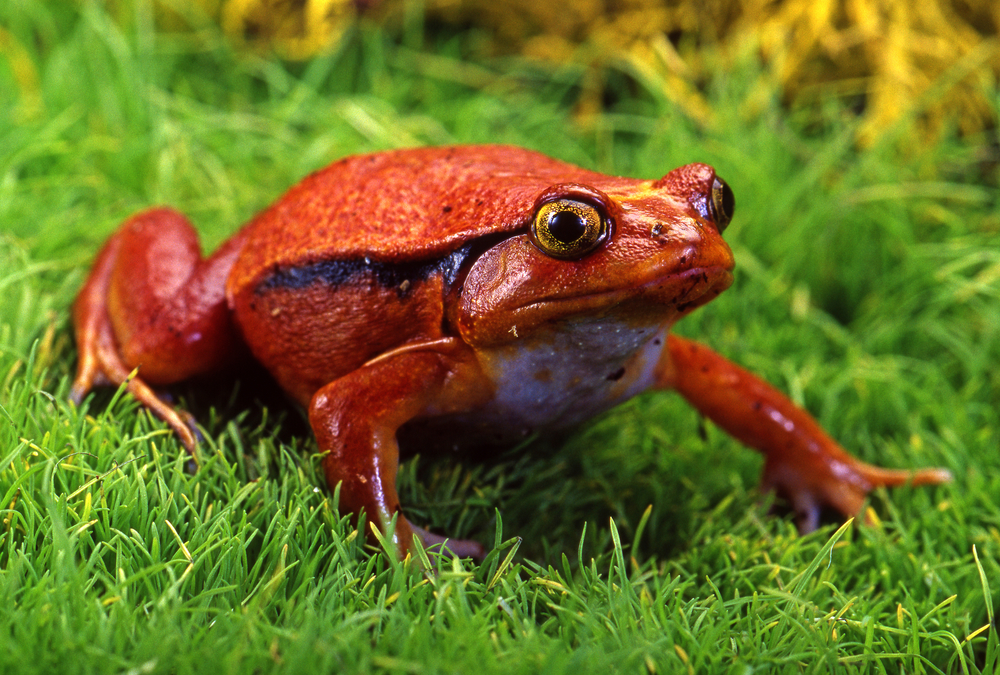
Defense Mechanisms and Survival Strategies
Tomato Frogs have evolved several defense mechanisms to deter predators. They can inflate their bodies to appear larger and secrete a thick, toxic substance from their skin when threatened. This secretion can irritate the eyes and mouth of predators, allowing the frog to escape. Their bright coloration serves as a warning signal to potential threats, indicating their toxicity.
Environmental Influences on Behavior
The behavior of Tomato Frogs is significantly influenced by environmental factors. Habitat conditions such as temperature and humidity play a crucial role in their daily activities and reproductive cycles. Seasonal changes impact their breeding behavior, with increased activity during the rainy season. In captivity, Tomato Frogs may exhibit different behaviors compared to their wild counterparts, often due to variations in habitat and care.
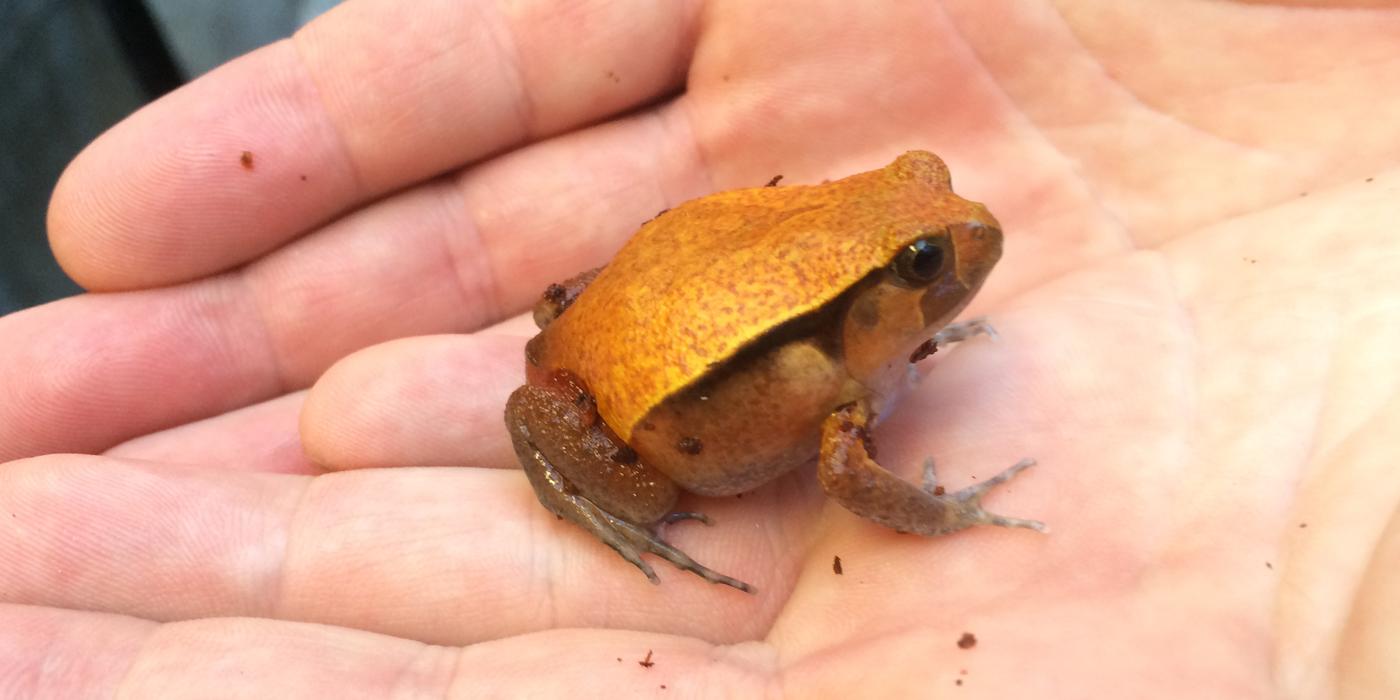
Conservation Status and Human Impact
Currently, the Tomato Frog is classified as a species of least concern by the International Union for Conservation of Nature (IUCN). However, they face threats from habitat destruction, climate change, and the pet trade. Urbanization and agricultural practices have led to habitat loss, while diseases like chytridiomycosis pose additional risks. Conservation efforts are underway, including habitat protection and breeding programs to ensure the survival of this unique species.
Observing Tomato Frogs in Captivity
For those interested in keeping Tomato Frogs as pets, it is essential to provide an appropriate environment. A spacious terrarium with a suitable substrate, such as a mix of coco fiber and sand, is recommended. Regular maintenance, including water changes and monitoring humidity, is crucial for their health. Observing their natural behaviors in captivity can provide valuable insights into their ecology and needs.
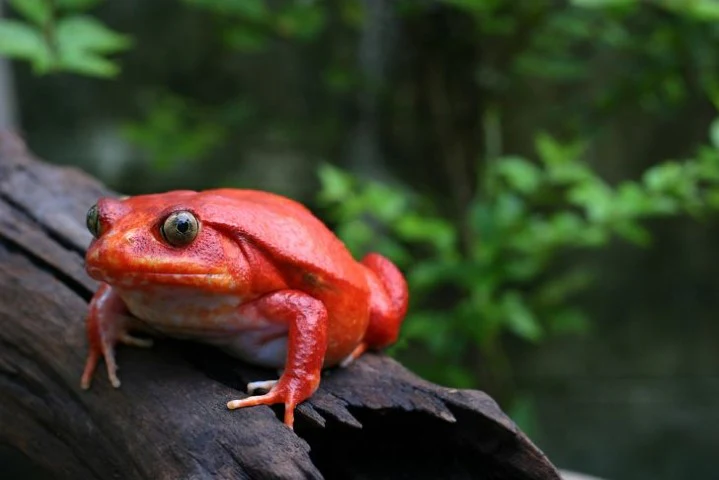
Conclusion
The Tomato Frog is a remarkable species with unique behaviors and adaptations. Understanding their ecology is vital for conservation efforts and for fostering appreciation among enthusiasts and researchers alike. Continued research and awareness are essential to protect this vibrant amphibian and its habitat.

